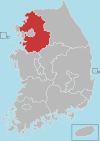
South Korea is made up of 22 first-tier administrative divisions: 6 metropolitan cities, 1 special city, 1 special self-governing city, and 14 provinces, including three special self-governing provinces and five claimed by the ROK government. These are further subdivided into a variety of smaller entities, including cities, counties, districts, towns, townships, neighborhoods and villages.

Goyang is a city in Gyeonggi Province in the north of South Korea. It is part of the Seoul Capital Area, making Goyang one of Seoul's satellite cities. It is one of the largest cities in the Seoul Capital Area, with a population of just over 1 million. Ilsan, a planned city, is located in the Ilsandong-gu and Ilsanseo-gu districts of Goyang. It also includes Deogyang-gu which is closer to Seoul.
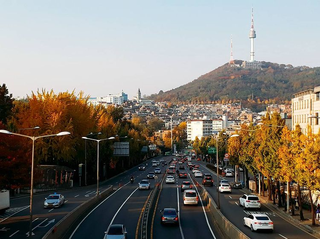
Yongsan District is one of the 25 districts of Seoul, South Korea.
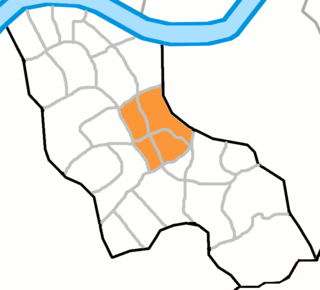
Daechi-dong (Korean: 대치동) is an affluent neighborhood in Gangnam District, Seoul, South Korea. Daechi-dong is divided into three different "dongs" which are Daechi 1-dong, 2-dong, and 4-dong. Daechi-dong is predominantly considered the residential area of Gangnam. As a result, real estate in the area is highly competitive and expensive compared to other parts of Gangnam. The Yangjaecheon is a stream that runs through the heart of Daechi-dong.
Hwamyeong (Korean: 화명) is a region in Buk-gu, northern Busan, South Korea. It is situated along the east bank of the Nakdong River, and since 2003 has been divided into three dong, Hwamyeong 1, 2, and 3-dong. The total area of the three dong is approximately 12 km2 (5 sq mi). It was designed to serve as a commuter town for Busan, and was home to about 99,000 people as of February 2020.
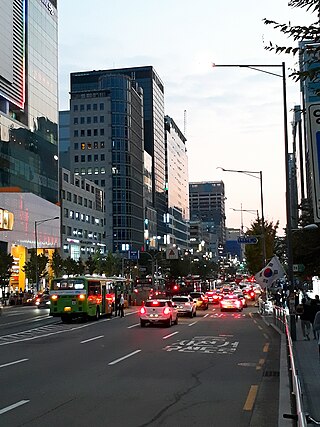
Mapo District is one of the 25 districts of Seoul, South Korea.
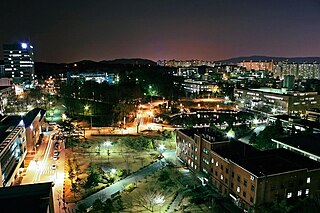
Nowon District (Nowon-gu) is a residential district of Seoul, South Korea, located in the most northeastern part of the metropolitan city. It has the highest population density in Seoul, with 619,509 people living in the area of 35.44 km².

Seongdong District (Seongdong-gu) is one of the 25 gu which make up the city of Seoul, South Korea. It is situated on the north bank of the Han River. It is divided into 20 dong (neighbourhoods).

Dongjak District (Korean: 동작구) is one of the 25 gu (districts) that make up the city of Seoul, South Korea. Its name was derived from the Dongjaegi Naruteo Ferry, on the Han River which borders the district to the north. It was the 17th gu created in Seoul, after being separated from Gwanak District on 1 April 1980.

Seo District (Seo-gu) is the largest district in Incheon, South Korea. It has an area 111.2 square kilometres (42.9 sq mi), and it has the largest area of farmland in Incheon.
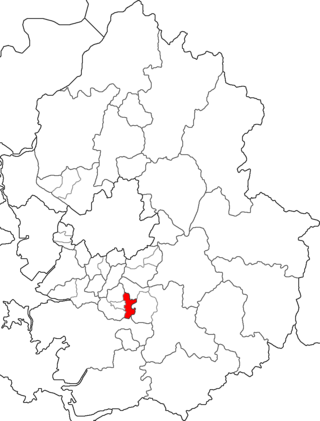
Yeongtong-gu, established in 2003, is the eastern district of the city of Suwon in Gyeonggi-do, South Korea. It is split from Paldal-gu and is Suwon's newest "gu".

Deogyang District (Korean: 덕양구) is a gu (ward) in Goyang, South Korea.
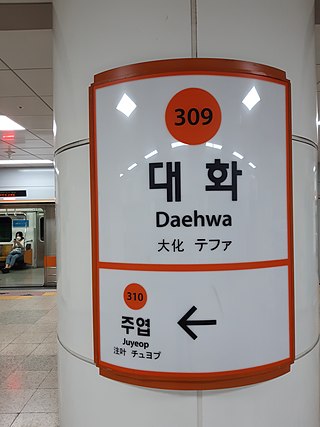
Daehwa Station is an underground metro station on the Seoul Subway Line 3, operating as an extension of Line 3 of the Seoul Subway, in Daehwa-dong, Ilsanseo-gu, Goyang, South Korea. The station is Line 3's northwestern terminus and its 6 exits offer access to, among other places, KINTEX. Travel time from Daehwa to Seoul Station, changing to Line 1 at Jongno 3(sam)-ga, is 1 hour and 2 minutes, while traveling the full length of Line 3 to Ogeum takes 1 hour and 36 minutes.

Man'gyŏngdae-guyŏk or Man'gyŏngdae District (Korean: 만경대구역) is one of the 18 guyŏk (wards) that constitute P'yŏngyang, North Korea. It began as a village called Man'gyŏngdae-ri in South P'yŏngan Province before becoming a district of P'yŏngyang in September 1959. The area is surrounded by several hills, the highest one named Man'gyŏng Hill because one can enjoy a bird's-eye view of the surrounding scenic landscape, and the village at its foot is called Man'gyŏngdae. Man'gyŏngdae was the birthplace of North Korean leader Kim Il Sung.

Nam District (Nam-gu) is a district of Ulsan, South Korea. Its name literally means "South Ward".
A dong (Korean: 동) or neighborhood is a submunicipal level administrative unit of a city and of those cities which are not divided into wards throughout Korea. The unit is often translated as neighborhood and has been used in both administrative divisions of North Korea and South Korea.

Nam District is the southern district of Gwangju (광주광역시), South Korea. 'Nam'(南) means 'south' in Korean hanja. 'gu'(區) means 'district' of metropolitan city in Korean hanja.

Dong District is a gu, or district, in central Ulsan, South Korea. Its name literally means "East Ward".
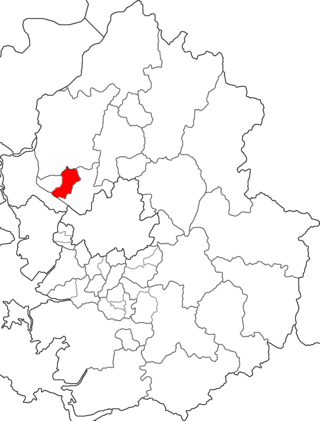
Ilsandong District is a district in Goyang, Gyeonggi Province, South Korea. Ilsan-gu was divided into Ilsandong-gu, meaning 'east of Ilsan' and Ilsanseo-gu, meaning 'west', on May 16, 2005.
Ilsan New Town (Korean: 일산신도시) refers to a planned city occupying Ilsandong-gu and Ilsanseo-gu of Goyang.


















